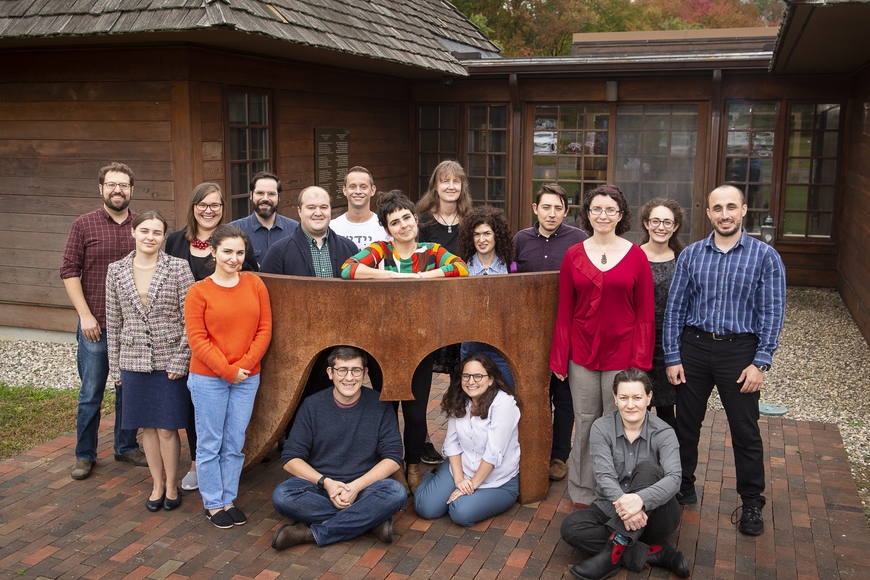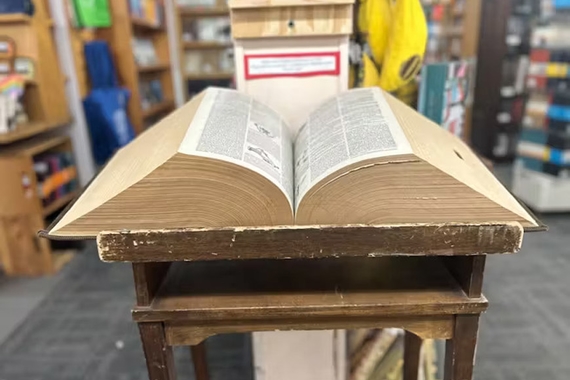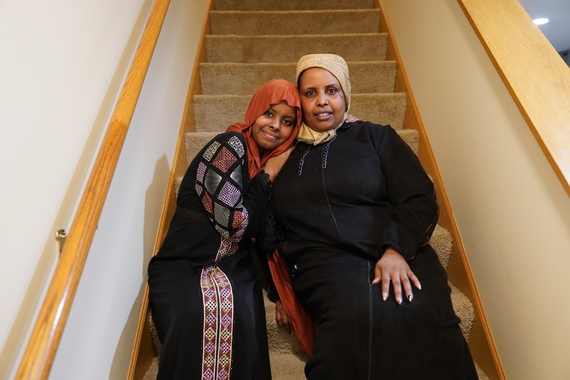Profile: Meyer Weinshel
Meyer Weinshel
Role: Graduate Student
Languages: German, Yiddish, Hebrew, English
Meyer Weinshel joined the department in 2014. His research centers on Central and Eastern European Jewish literatures written in German and Yiddish, and particularly translations of German poetry into Yiddish that were completed in and beyond the former Habsburg Empire. Weinshel works in not just one language beyond English, but three: Yiddish, Hebrew, and German.
On his research and forays into multiple languages, Weinshel says "I am invested in translation, transmission, and 'multiples' of texts, and how each version both separately and simultaneously shape larger cultural trends over time. Similarly, I am interested in how the languages and materials we use for teaching evolve (or don’t). This also pertains to my dissertation project that relies heavily on the anthology as a form, and its role for German-into-Yiddish translations. Translation, anthologies, etc. pose as many questions as they do answers to our understanding of Jewish culture in 20th-century Central and Eastern Europe.For students, translation can also help them understand minority cultures and their relationship to multilingualism, state power, etc."
Weinshel cannot stress enough how translation plays a large role in his life as a reader as well as researcher. He says "I often reach for works that are produced in other parts of the world, not only from the many other languages comprising a German, Nordic, Slavic & Dutch Department, but from many others. That might seem contradictory to some, but it by no means has to be.” He is also grateful for the literary community in the Twin Cities, from local bookstores to the independent publishers at the forefront of so much of this work.
With all this language practice, it makes sense that Weinshel has traveled to many places. What began with a study abroad program in Vienna as an undergraduate at Macalester College has evolved into "archival research [which] has taken me back to Austria, and to new places not often utilized by German studies research: Vilnius, Lithuania (where I also spent one summer learning Yiddish), and Jerusalem (to the National Library and Hebrew University)." New York City has also been a place on Weinshel's most visited list, where he "spent significant amounts of time learning Yiddish and in the YIVO (Institute for Jewish Research) Archives."
Of his time abroad and otherwise away from home, Weinshel notes "Berlin and Vienna, as large metropolitan cities with long, complicated, and dark histories, speak to how important nuanced language and culture education is. Spending additional time in other parts of the country (like New York), and also traveling to the Middle East serves as a reminder that the cultural and geopolitical legacies relevant to 'German Studies' cannot be confined to national borders, nor are 'Germany' or 'Austria' monolithic entities. Not now, and not historically."
In addition to studying languages, Weinshel has taught English (as a Second Language), German, and Yiddish. "Yiddish pedagogy was an entirely different ballgame," Weinshel says of his time teaching the Yiddish Book Center's new textbook, In eynem, and participating in their pedagogy program. This was a particularly exciting opportunity because, as Weinshel points out, "Few Yiddish textbooks have been published since the Second World War (when close to half of the world’s Yiddish speakers were murdered). The most commonly-used Yiddish textbook is more than 60 years old."
When teaching Yiddish locally with Jewish Community Action, the groups of students were incredibly varied. Weinshel describes them as "interested and hard-working students from many walks of life. There were high-school students, undergraduates, those with terminal degrees, retirees, non-Jews, Jews-by-choice, students who had gone to secular Yiddish schools in New York in the sixties, etc., who wanted to simply engage with this facet of modern Jewish culture as it exists in Yiddish. Many came with other language training, or were bilingual or multilingual. We had Dutch, Russian, Hebrew, German, and Swedish speakers in the class."
Weinshel had a number of wonderful moments with this course, but he also had one particular highlight. "On Holocaust Remembrance Day, and during the COVID-19 lockdowns, we as a class read poetry written in Yiddish by those who had either experienced it directly or had watched in horror from the United States. Even with the range of abilities in a community class, students read through the poems together, working out vocabulary together due to the range of languages they knew. Many were touched by the subject matters of the poem, written in a language many have had little access to, and in a style that is quite breathtaking.”
Having taught various language courses, Weinshel says "Yiddish language courses face the same challenges that other language/area studies fields do. Two challenges, however, stand out: students need to steadily gain fluency in reading and writing a language that doesn’t use the Latin alphabet. And the other: getting students to recognize Jewish cultural specificity that is so deeply embedded in a language like Yiddish, but is not easy to understand without growing up in an immersive environment. From the beginning of every Yiddish language class I’ve taken or taught, Yiddish song, folklore, etc. plays a central role. Students still learn vernacular (i.e., communicative) usage of the language, but that does differ somewhat from many other modern language curricula."
For students, Weinshel hopes that his courses "also convey how Yiddish speakers, as historically multilingual actors in a world that had vastly different cultural, political, and linguistic borders for much of the past 1,000 years, were the recipients of culture worth preserving and studying. Yiddish language, literature, film, theater, represents a world, many facets of which were lost to emigration, war, and genocide, but it also represents how cultures maintain a sense of collective identity through language and storytelling."
Meyer is working as an educational outreach and collections development RA for the Center for Holocaust and Genocide Studies.
In Spring 2021 Meyer Weinshel will be a Lecturer in Yiddish Studies in the Department of Germanic Languages and Literatures at The Ohio State University, teaching Yiddish language as well as general education courses on modern Yiddish culture.



